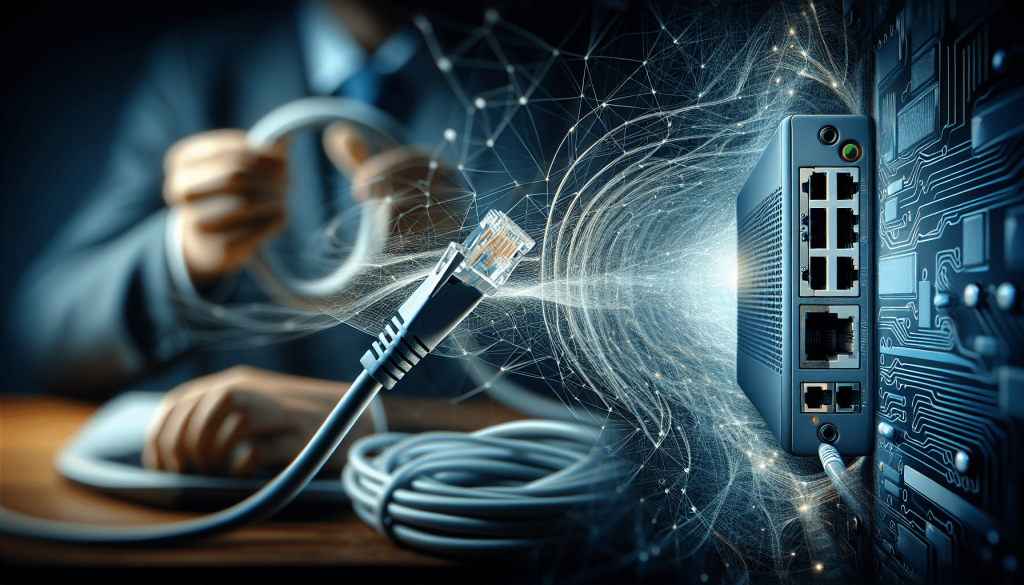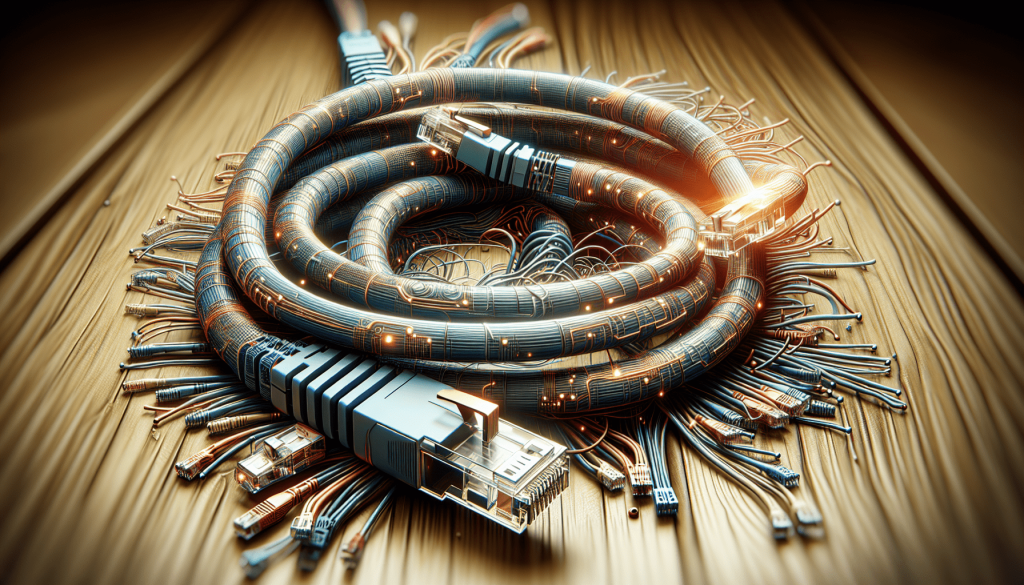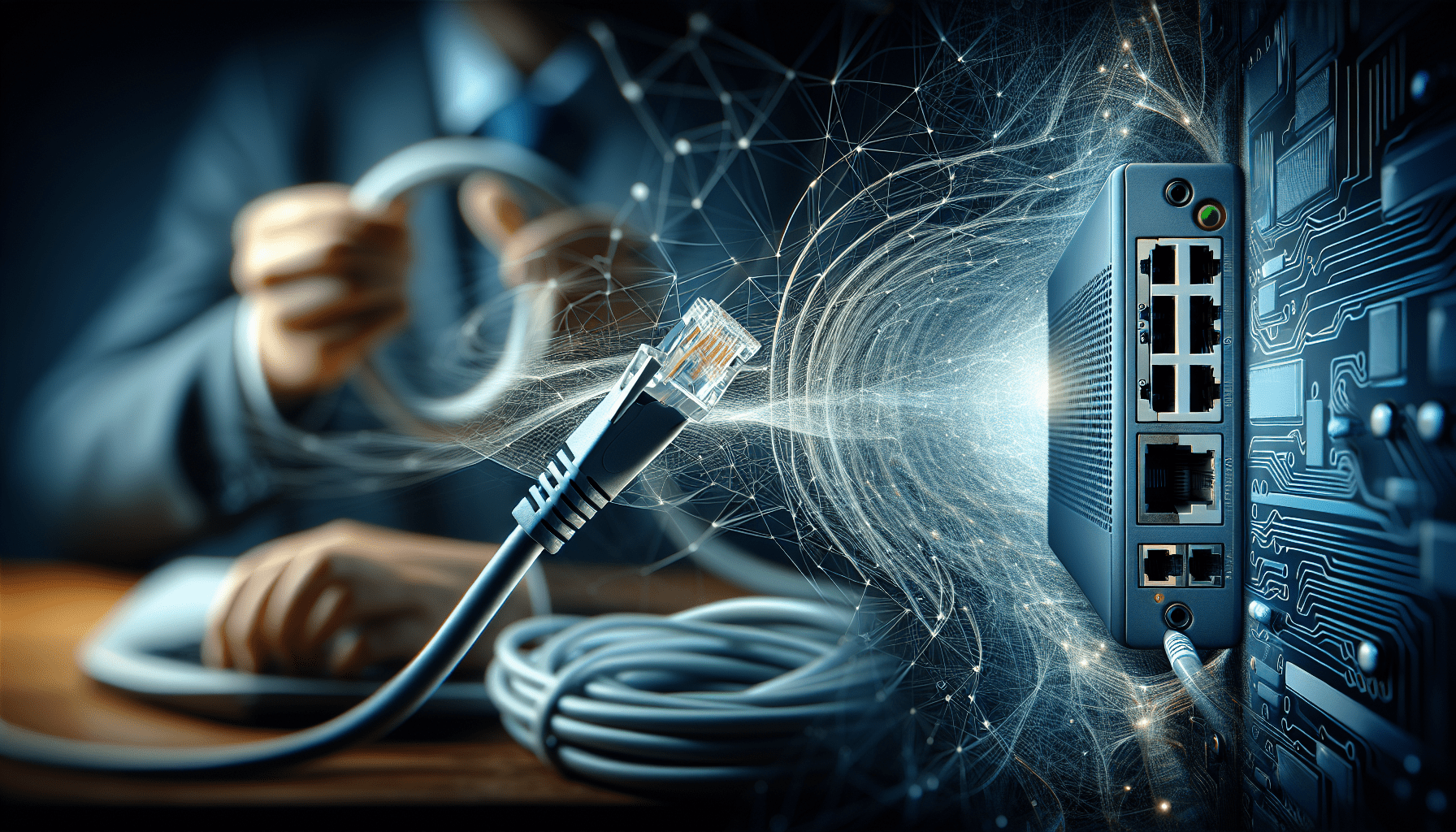So, you’ve encountered some pesky router connectivity issues, huh? Well, fret not, my friend, because in this handy guide we’ve got some effective troubleshooting techniques up our sleeves that will have you back online in no time. Whether you’re struggling with slow internet speeds, dropped connections, or simply can’t connect at all, we’ll walk you through the best ways to tackle these problems head-on. Say goodbye to frustrating Wi-Fi woes and get ready to become a troubleshooting pro!

Checking Physical Connections
When troubleshooting router connectivity issues, it’s important to start by checking the physical connections. Begin by inspecting the power supply of your router. Make sure that it is securely plugged into a working power outlet. If the power supply is connected properly, check the Ethernet cable connections. Ensure that the cables are firmly plugged into the appropriate ports on both the router and your device. Sometimes, loose or faulty connections can cause connectivity problems, so it’s crucial to ensure that all physical connections are secure.
Another aspect to consider when checking physical connections is examining the router lights. These lights provide valuable information about the status of your router and its connections. Look for any abnormal or blinking lights, as this may indicate an issue. For example, if the Internet or Ethernet lights are not illuminated, it could mean that there is a problem with your internet service or Ethernet connection. By inspecting the power supply, verifying Ethernet cable connections, and checking router lights, you can eliminate any physical connection issues that may be causing router connectivity problems.
Resetting the Router
Resetting the router is a common troubleshooting step that can help resolve connectivity issues. The first method to try is power cycling the router. This involves turning off the router, unplugging the power supply, waiting for about 30 seconds, and then plugging it back in and turning it on again. Power cycling can refresh the router’s settings and fix minor glitches that could be causing connectivity problems.
If power cycling doesn’t solve the issue, you may need to perform a factory reset. This will restore the router to its default settings, eliminating any configuration issues that might be causing the connectivity problem. However, keep in mind that performing a factory reset will erase all customized settings, so you will need to reconfigure your router after the reset. Resetting the router can often help to clear any software-related issues and restore connectivity.
Updating Router Firmware
Outdated firmware can lead to connectivity problems, so it’s essential to regularly update your router’s firmware. Begin by checking for firmware updates from the manufacturer’s website or the router’s administration interface. If new firmware versions are available, download the appropriate update for your router model.
When downloading firmware updates, ensure that you are following the manufacturer’s instructions and using the correct firmware file. Once the update is downloaded, access your router’s administration interface and navigate to the firmware update section. Upload the downloaded firmware file and follow the on-screen prompts to install it. Updating the router’s firmware can introduce bug fixes, security enhancements, and improved performance, thereby resolving any connectivity issues related to outdated firmware.
Adjusting Router Settings
Sometimes, adjusting certain router settings can help resolve connectivity issues. Start by checking the wireless network settings. Ensure that your router’s wireless network is enabled, and the SSID (network name) is being broadcasted. Additionally, check for any wireless security settings, such as encryption protocols and passwords, and make sure they are correctly configured.
One specific setting to consider is changing the wireless channel. Wireless routers operate on different channels, and interference from other devices or neighboring networks can impact connectivity. By switching to a less congested channel, you can potentially improve the connection stability. Experiment with different channels and observe the impact on your router’s performance.
Another setting that can enhance security and prevent unauthorized access is enabling MAC address filtering. You can create a list of allowed MAC addresses, which are unique identifiers for network devices, and only allow these devices to connect to your network. Enabling this feature can provide an added layer of protection and ensure that only trusted devices can establish a connection to your router.

Using Wired Connection for Testing
To further troubleshoot router connectivity issues, it can be helpful to connect a device directly to the router using an Ethernet cable. This bypasses any potential wireless connection problems and allows you to determine if the issue is specific to wireless connectivity. Connect one end of the Ethernet cable to your device’s Ethernet port and the other end to one of the router’s Ethernet ports.
After establishing a wired connection, verify if you have internet connectivity. If you have a stable internet connection through the wired connection, it indicates that the issue lies with the wireless aspect of your router. On the other hand, if you still encounter connectivity problems even when connected directly via Ethernet, it suggests a more significant issue with your router or internet service.
Running Network Troubleshooters
Most operating systems offer built-in network troubleshooters that can help diagnose and resolve connectivity issues. These troubleshooters automatically scan for common problems and attempt to fix them. To access these tools, navigate to your device’s network settings and look for the network troubleshooting or diagnostic options.
When using built-in network troubleshooters, start by selecting the appropriate troubleshooter for the type of connection you are experiencing issues with, such as Wi-Fi or Ethernet. The troubleshooter will then run various tests to identify any problems and provide suggestions for fixing them. It may check for issues with your network configuration, drivers, or security settings.
In addition to general network troubleshooters, some operating systems offer specific troubleshooters for Ethernet connectivity or DNS (domain name system) settings. These specialized troubleshooters can help diagnose and resolve issues related to these specific aspects of your network connection. Running network troubleshooters can be an efficient way to identify and resolve common connectivity problems.
Disabling Firewall and Antivirus
Firewall and antivirus software can sometimes interfere with your router’s connectivity. Temporarily turning off the firewall can help determine if it is causing the issue. However, keep in mind that disabling your firewall leaves your device more vulnerable to security threats, so be sure to enable it again once the troubleshooting is complete.
Similarly, antivirus software can sometimes block certain network traffic or mistakenly classify legitimate connections as threats. To rule out any antivirus-related issues, temporarily disable your antivirus software and see if the connectivity problem persists. Again, remember to enable your antivirus software once you have completed the troubleshooting process.
By disabling the firewall and antivirus temporarily, you can determine if they are the culprits behind your connectivity problems. If disabling them resolves the issue, consider reconfiguring your firewall or antivirus settings to allow your router’s traffic while maintaining optimal security.
Checking IP Address Assignment
An incorrect or conflicting IP address assignment can cause connectivity problems. Start by verifying the DHCP (Dynamic Host Configuration Protocol) configuration on your router. DHCP is responsible for assigning IP addresses to devices on your network. Ensure that your router’s DHCP server is enabled and set to automatically assign IP addresses.
If you suspect a problem with DHCP, you can assign a static IP address to your device temporarily. By manually configuring the IP address, subnet mask, default gateway, and DNS server settings, you bypass the dynamic assignment process. Assign a static IP address that is within your router’s subnet range to avoid conflicts.
To renew your IP address, you can release the current address and request a new one from your router’s DHCP server. This can help resolve any issues related to IP address conflicts or incorrect assignment. Access your device’s network settings, find the option to release and renew the IP address, and follow the prompts to refresh the address assignment.
Checking and adjusting IP address assignments can rectify connectivity issues caused by conflicts or misconfigurations in the network addressing scheme.
Testing Connectivity with Different Devices
To determine if the connectivity issue is specific to a particular device or affects multiple devices, it’s important to test the connection with different devices. Connect multiple devices, such as smartphones, tablets, laptops, or other computers, to your router’s Wi-Fi network.
Once connected, check if each device can access the internet without any problems. If only one device experiences connectivity issues while others function correctly, it may indicate an issue with that specific device. In such cases, troubleshooting steps specific to the device or its network adapter may be required.
If multiple devices encounter connectivity problems, it suggests that the issue lies with your router or network infrastructure. By confirming if the connectivity problem is widespread or limited to a particular device, you can narrow down the troubleshooting focus and determine the appropriate course of action.
Contacting Internet Service Provider (ISP)
If you have exhausted all troubleshooting methods without resolving the connectivity issue, it may be time to contact your Internet Service Provider (ISP). Before contacting your ISP, verify the status of your internet service. Check if there are any reported outages or service interruptions in your area. Your ISP’s website or customer support line can provide information about the current status of their services.
If there are no reported issues and you continue to experience connectivity problems, it’s best to contact your ISP’s technical support. They can help diagnose and troubleshoot any problems related to your internet connection. Provide them with detailed information about the issue, steps you have already taken to troubleshoot, and any error messages you have encountered. Working with your ISP’s technical support team can often lead to a resolution for complex connectivity issues.
In conclusion, troubleshooting router connectivity issues requires a systematic approach that covers different aspects of the network connection. By checking physical connections, resetting the router, updating router firmware, adjusting router settings, using wired connections for testing, running network troubleshooters, disabling firewall and antivirus temporarily, checking IP address assignments, testing connectivity with different devices, and contacting your ISP when necessary, you can effectively resolve most router connectivity problems. Remember to document any changes you make during the troubleshooting process, as this can help track progress and assist technical support if further assistance is required.
